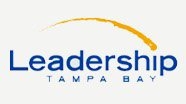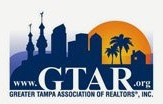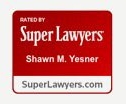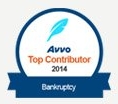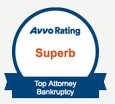Top 7 Things To Consider When Filing Bankruptcy
Prospective clients are often intimidated by the thought of filing bankruptcy, and with the volumes of myth, misinformation, and misunderstanding their fears are understandable. However, armed with the right questions and the correct information, liquidation or reorganization is a great tool to help people struggling to pay debt or affected by a major life change. The following list is the top 7 things we typically discuss with a potential bankruptcy client.
1. Salary
The Means Test was one of the biggest changes incorporated by the Bankruptcy Abuse Prevention and Consumer Protection Act of 2005 (BAPCPA). The means test is used to determine if the debtor has monthly disposable income based on a comparison of the debtor’s annual income to the median income for the debtor’s household size, as determined by the IRS. The annual income is determined by projecting what yearly income would be based on the previous six months’ income. Therefore, any bonuses in the previous six months would artificially inflate annual salary, possibly forcing the debtor to file Chapter 13 – Reorganization; and any unpaid time off, decrease in hours, loss of overtime, etc., would artificially decrease yearly income figures, possibly allowing the debtor to file Chapter 7 – Liquidation.
2. Bank Accounts
Money in the bank presents two interesting issues. First, money in checking or savings accounts constitutes assets that must be exempted by the debtor. Thus filing bankruptcy the day after pay-day increases the debtor’s assets, creating a situation where the debtor’s exemptions are used to protect money in the bank rather than other assets. Thus, if time allows the bankruptcy can be timed so that the bank account is at its lowest point after all normal monthly expenses have cleared. This will allow the debtor’s exemptions to be used to protect other assets.
Second, where does the debtor bank? Most credit unions will freeze the debtor’s bank accounts until the bankruptcy trustee verifies that the bank accounts are exempt. This process can take up to 30 days or more for the unwary debtor. In addition to credit unions, Wells Fargo also freezes bank accounts of its customers who file bankruptcy. Thus, it may be necessary to do some pre-filing preparation, and move funds to a banking institution that does not freeze its depositors’ accounts.
3. Keep or Surrender Secured Assets
Whether to keep or surrender an asset is one major factor that will help determine whether a Chapter 7 or 13 is more appropriate. If the debtor wants to retain a secured asset, but is behind in payments, then Chapter 13 Reorganization is the appropriate option because of the ability of the debtor to repay any arrearage within the bankruptcy plan. If the debtor is current in their payments, either a Chapter 7 or Chapter 13 would work, as long as the borrower stays up to date on payments.
One huge myth surrounding bankruptcy is that the surrender of property means the debtor no longer owns the property – this is false. The debtor has to take some action to return the asset back to the creditor. Many bankruptcy filers have been stuck owning real estate years after the case was discharged because, although they surrendered the property, they failed to do anything to transfer the title to the property either by sale, short sale, foreclosure sale, deed in lieu of foreclosure, etc.
4. Homeowner or Condominium Association
Pursuant to the bankruptcy code section 523(a)(16), assessments due to a homeowner or condominium association prior to filing the case are dischargeable, but assessments owed after the date of filing (called the Order for Relief) are unaffected by the bankruptcy filing and are owed personally by the homeowner or unit owner. Similar to the analysis of surrendering assets, we have seen many debtors surprised to be sued by their association months after the filing because they failed to pay post-filing association assessments.
Also, code enforcement and similar violations that continue beyond the date of filing are non-dischargeable. While the pre-filing debt may be eliminated, the condition that caused the code violation – the damaged roof, overgrown grass, green pool, etc. – are not “fixed” by the bankruptcy and, therefore the post-filing accrual of fines continue against the debtor as a non-dischargeable, personal obligation.
5. Asset Valuation (including businesses)
Florida’s Constitution allows a $1,000 “wildcard” exemption for any assets owned by the debtor (Article X, Section 4(a)(2)). This wildcard exemption includes cash on hand, money in the bank, furniture, clothes, jewelry, tools of the trade, pets, etc.In addition, if the debtor rents a house or apartment, or surrenders their primary residence, then the debtor gets the “super-exemption” of Florida Statute 222.25(1), in the amount of $4,000, thus allowing a total exemption of $5,000. In most cases, this super-exemption is sufficient to exempt all of the debtor’s assets in a Chapter 7 case.
One type of asset that might be more valuable than the allowed exemption is a business, whether sole proprietorship, corporation or limited liability company, owned wholly or partially by the debtor. Previously, service-oriented businesses owned by one person could be valued very low or even at $0, because if the owner decided to close the business, it had no value to the bankruptcy estate. Recent court decisions changed this analysis, and now businesses must be worth something, although it is still possible to value service businesses very low.
6. Owning Multiple Cars
Often mom and/or dad will put their child’s car in their name to assist with financing, with insurance, or for liability purposes. This often happens with spouses as well – one spouse will be listed on title to all of the automobiles. This creates a problem in bankruptcy in that the “other person’s” car is now an additional asset of the debtor, and an asset of the bankruptcy estate.
If a borrower is on the brink of bankruptcy, then it is likely too late to start transferring car titles around. However, if there is some time to strategize prior to filing, it may be possible to transfer the asset to its “proper” owner. If there is not enough time to properly plan, the debtor can show that the other person (child or spouse) pays the car payments, insurance and maintenance, and drives the car exclusively, then it is possible that the bankruptcy trustee and/or the Court will consider the car “constructively” owned by the non-filer and the car will be excluded from the bankruptcy. However, this analysis must be discussed with counsel first, as it is factually difficult to prove, and never a guaranteed result.
7. Non-dischargeable debt
Unfortunately, some debt is non-dischargeable, including IRS debt, student loan debt, and alimony and child support payments. If the debtor is overburdened with this type of debt, then Chapter 13 bankruptcy may be the better option, because it allows the debtor to pay back the debt over a 60-month reorganization plan.If the debtor has too much of this type of debt, or if a Chapter 13 is unrealistic given the borrower’s circumstances, then options other than bankruptcy should be explored.
– Shawn M. Yesner, Esq.
For more information on Chapter 7, Chapter 13, or Bankruptcy generally, or to schedule a free initial consultation to discuss your options, please contact our firm at: 727-261-0224 or email me at: shawn@yesnerlaw.com.
Shawn M. Yesner, Esq., is the founder of Yesner Law, P.L., a Tampa-based boutique real estate law firm that helps clients eliminate debt by providing options, so they can live the lifestyle of their dreams. We assist clients with Chapter 7 liquidation, Chapter 13 reorganization, bankruptcy, short sales, loan modifications, and foreclosure defense, for clients in Westchase, Carrolwood, Tampa, Odessa, St. Petersburg, St. Petersburg Beach, Treasure Island, Medeira Beach, Reddington Beach, Kenneth City, Gulfport, Pinellas Park, Seminole, Clearwater, Clearwater Beach, Oldsmar, Dunedin, Safety Harbor, Palm Harbor, Lutz, Wesley Chapel, New Port Richey, Trinity, Port Richey, and other areas that comprise the greater Tampa Bay area.

